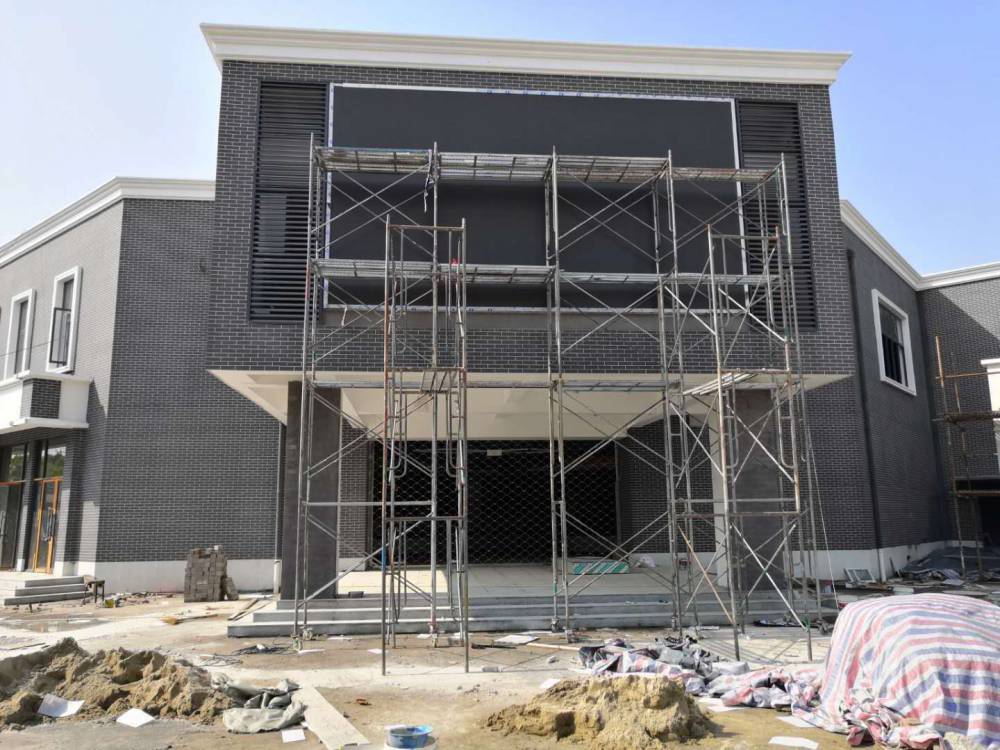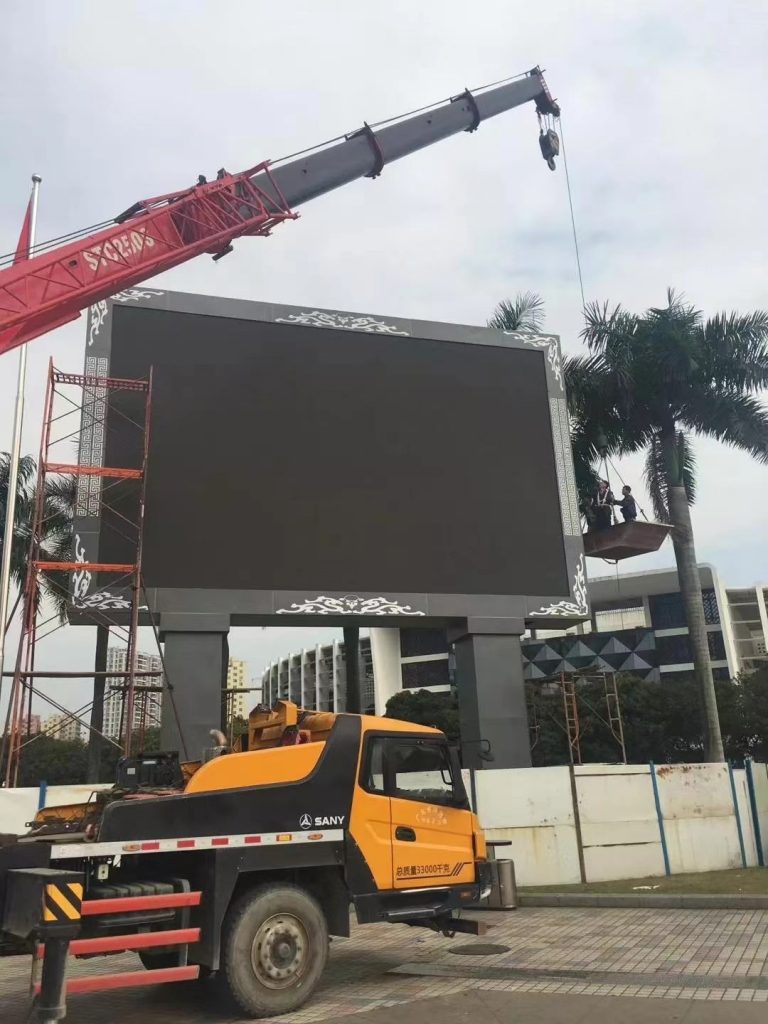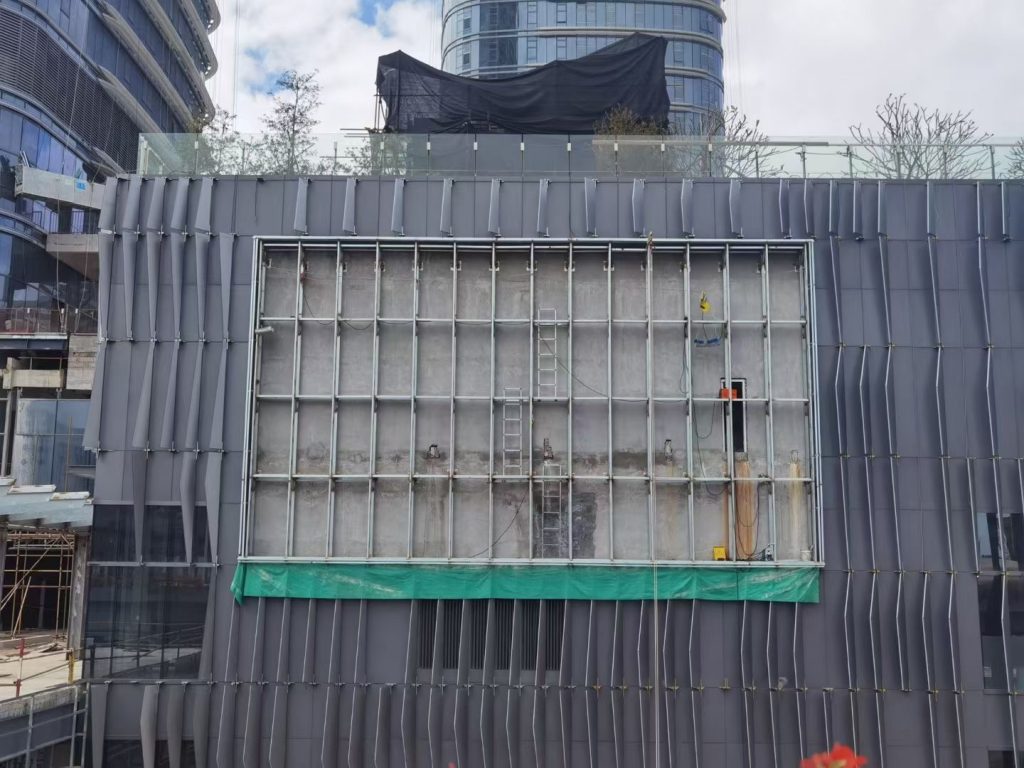We all know that the stadium LED display scheme has high requirements for construction. If it does not meet the construction requirements, it is prone to hidden dangers. Then what are the requirements for the construction of the scheme, let’s take a look.
Preparations for the construction of the stadium LED display scheme

1. It is necessary to meet the electricity requirements of the LED display project (the maximum capacity of 22 square meters needs to be 14KW+2.5 KW); the user is responsible for laying the power supply line to the display installation site
2. It needs to pass the original structural safety assessment of the relevant departments;
3. LED display steel structure (including scaffolding, lighting in the steel structure, and laying of strong and weak current cables into the steel structure);
4. The LED display must be fireproof, that is, it has a flame retardant function;
5. According to the construction period requirements determined by the contract, fully prepare for production, technology, personnel and materials, and ensure that the installation and testing of related equipment are completed on time to the designated location.
6. Based on the principle of contract-related technical indicators and some industry standards, formulate a detailed quality assurance plan to ensure high-quality and efficient performance of the contract.
7. Formulate strict safety guarantee measures to prevent all personal and equipment liability accidents, and ensure zero accident rate during installation and construction.
8. Scientific management, orderly production, unity and cooperation, multi-party cooperation, protect the environment and original facilities, and keep the site clean and tidy.
9. Comply with the relevant national regulations on environmental protection to ensure that there is no pollution or damage to the on-site environment.
10. On-site coordination and equipment installation and commissioning by engineers, mainly responsible for structure production, edge decoration and other electrical installation work
Design standards and basis for stadium LED display solutions
National and industry standards:

SJ/T 11141-2003 “General Specification for LED Displays”
SJ/T 11281-2007 “Light Emitting Diode (LED) Display Test Method”
SJ/T10463-1993 “Packaging, Marking and Storage Requirements for Electronic Measuring Instruments”
GB 2423.1-2001 “Basic environmental test rules for electrical and electronic products – low temperature test method”
GB 2423.2-2001 “Basic environmental test rules for electrical and electronic products – high temperature test method”
GB2423.3-1993 “Basic environmental test procedures for electrical and electronic products – test method for constant damp heat test Ca”
GB4943-2001 “Security of Information Technology Equipment”
GB 7251.1-2005 “Low-voltage switchgear and control equipment – Part 1: Form test and partial form test complete equipment”
GB 9254-2008 “Radio Disturbance Limits and Measurement Methods for Information Technology Equipment”
GB 50174-1993 “Code for Design of Electronic Computer Room”
GB6587.4-1986 “Vibration test of electronic measuring instruments”
GB6587.6-1986 “Transportation Test of Electronic Measuring Instruments”
GB6593-1996 “Rules for Quality Inspection of Electronic Measuring Instruments”
GB9813-2000 “General technical conditions for miniature digital electronic computers”
GB11463-1989 “Reliability Test of Electronic Measuring Instruments”
JDJ16-83 “Technical Specifications for Electrical Design of Buildings”
JGJ/TT16-92 “Code for Electrical Design of Civil Buildings”
GBF16-87 “Code for Anti-Inflammation of Architectural Design”
GB50054-95 “Code for Design of Low-Voltage Power Distribution”
GB50034-95 “Lighting Design Specification for Industrial Enterprises”
CECS72:97 “Code for Engineering Design of Integrated Cabling System for Buildings and Buildings”
GBJ65-88 “Code for Grounding Design of Industrial and Civil Power Installations”
GBJ79-85 “Industrial Enterprise Communication Grounding Design Specification”
Basic requirements for stadium LED display projects

1. Suppliers provide original, brand-new equipment that meet the relevant quality standards put forward by the country and users.
2. All goods must be in good condition, no damage, and configuration consistent with the packing list at the time of unpacking inspection. The quantity, quality and performance shall not be lower than the requirements set out in this tender.
3. The appearance of the equipment is clean, and the marking numbers and fonts displayed on the surface are clear and unambiguous.
4. For the necessary components that affect the normal operation of the equipment, whether it is indicated in the technical specification or not, the supplier shall provide and clearly list it in the bidding documents.
5. Before installing the LED display, you must provide the import declaration form, certificate of origin and test report of the light-emitting tube.
6. If the equipment provided by the bidder has been scrapped at the time of actual supply (not included in the product series of the manufacturer at that time), if it fails to provide the equipment with the corresponding or higher configuration at the original price, it will be treated as a breach of contract.
7. When the bidder is actually supplying, if it is found that the goods provided do not have the import product tax payment certificate or fail to meet the relevant requirements in the bidding documents and bidding documents, they will be punished according to relevant laws and regulations.
8. After the installation is completed and the acceptance is passed, the supplier shall provide free after-sales service and technical support for 1 year.
9. The products used must be in the same batch, not in batches or not together.
10. The stadium LED display is a commercial demand, to ensure the quality and service life
Selection of LED Die for Stadium LED Display Solution

The core device of LED display is LED. Is LED selection suitable? It has a decisive impact on the life, reliability and display effect of LED display. In addition, due to the wide audience and strong publicity of the outdoor full-color LED display, the viewing angle of the display is required to be very large. Therefore, when making LED displays, it is the key to choose which brand and model of light-emitting diodes.
International led chip brands: CREE (Cree), NICHIA (Nichia)
A first-class LED manufacturer with high chip brightness, low current, slow decay, strong anti-static, mature technology, reliable quality, and can ensure that the service life of the LED display reaches more than 10-15 years;
The cost of LED chips using Cree and Nichia will increase by 5-10 times. The chips of Cree and Nichia must use original imported chips and packaging. In order to save costs, some companies will purchase chips and package them in China. Ordinary customers cannot tell the difference. from! Taiwan led chip brand: ES (Epistar)
Taiwan’s Epistar chip production technology is mature, saving energy and reducing emissions, reducing the investment in power capacity expansion, power equipment and cooling equipment, delaying the LED decay speed, maintaining high-quality display effects, improving system reliability, and delaying the overall service life of the display. Guaranteed service life of more than 10 years;
The overall technology of Epistar chips is ahead of domestic chip brands, and the price, service and after-sales are more suitable for domestic customers;
Domestic LED chip brands: Sanan, Silan, Huacan…
Domestic LED chip manufacturers are also in a period of rapid development, and they have a very big advantage in price; however, the quality of domestic manufacturers is mixed, and various low-end and inferior products are constantly being produced;
Based on the above situation, it is recommended to use ES wafer chips and use gold wires for packaging.